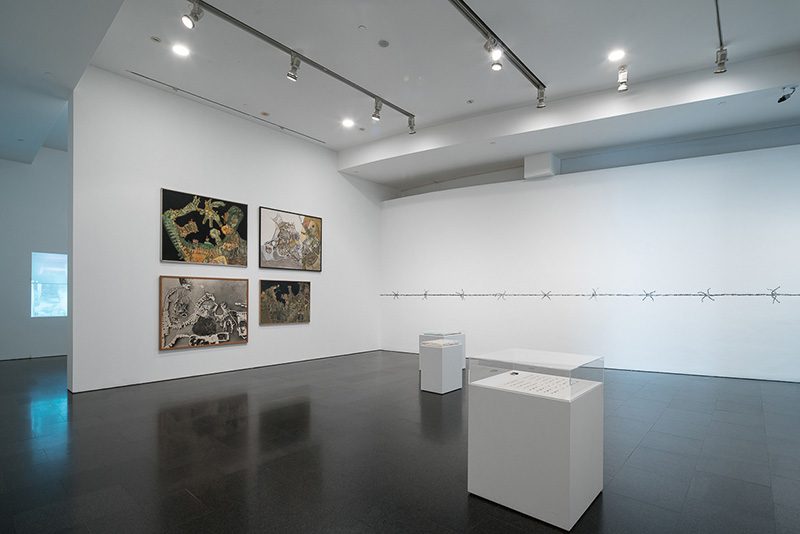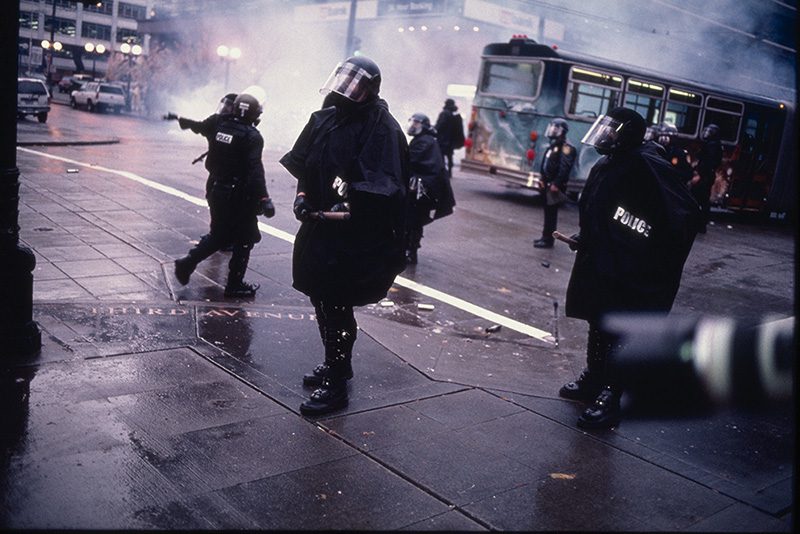ART CITIES:Barcelona -MACBA Collection 31
 The Museu d’Art Contemporani de Barcelona (MACBA) opened to the public on 28/11/95. The permanent collection of around 5,000 works focus on post-1945 Catalan and Spanish Art, although some International artists are also represented. A Museum Collection is not only one of its main working areas, but also what configures its identity and determines its capacity to interact with the present.
The Museu d’Art Contemporani de Barcelona (MACBA) opened to the public on 28/11/95. The permanent collection of around 5,000 works focus on post-1945 Catalan and Spanish Art, although some International artists are also represented. A Museum Collection is not only one of its main working areas, but also what configures its identity and determines its capacity to interact with the present.
By Dimitris Lempesis
Photo: MACBA Archive
The exhibition “MACBA Collection 31” offers a series of artistic itineraries built around three main subjects: experience, time and conflict. The 85 works by 50 artists of various generations from around the world, in the exhibition question the various forms of conflict in today’s world, while reflecting on the relation of art with itself and its potential for interrogating reality. Moreover, they reclaim sensory experimentation, corporeality and the experience of time as fundamental conditions for artistic practice. The exhibition represents a chronological period of over 50 years, from 1959 to 2014. Experience: The General System Theory of biologist Ludwig von Bertalanffy, which defined living beings as open systems, influenced Hans Haacke and formed the basis for his “Condensation Cube” (1965). In “Entrevendo” (1970–94), a large installation by Cildo Meireles, viewers are offered a synesthetic experience by being invited to enter a horizontal funnel-shaped structure in which hot air circulates, with two ice-cubes in their mouths. In Time: sensory experimentation implies working with the body in a form of art based on action and movement, with time as a decisive factor. Performance became a testing ground for artists, who documented their actions photographically. Joan Jonas was one of the first to record her performances on film. A few years later, Babette Mangolte incorporated movement as prime artistic material, while the installations of David Lamelas and Hans-Peter Feldmann and the explorations of other artists used time and duration as a field of research. Conflict: is the last section and features some of the realities that are common to the contemporary world, such as conflict, borders and migrations. In the tower of the Meier Building, the installation “If You See Something…” (2005) by Krzysztof Wodiczko presents a global picture of conflict through damning accounts of abuses of power. Other artists investigate the idea of walls and maps. Harun Farocki, in his filmic trilogy, highlights the irruption of military technology into civilian life. The exhibition reveals the fissures in a global world that perpetuates forms of labor associated with inequality and geopolitical conflict. A world challenged by an artistic practice that no longer understands the position of art if not as a critical agent. Artists in the exhibition: Francesco Abad, Vito Acconci, Agustín Parejo School, Francis Alÿs, Frederic Amat, Martí Anson, Art & Language, ASPEN, Jordi Benito, Marcel Broodthaers, Mircea Cantor, Étienne Chambaud, Octavi Comeron, Alice Creischer, Harun Farocki, Hans-Peter Feldmann, León Ferrari, Esther Ferrer, Peter Fischli & David Weiss, Carlos Garaicoa, Luís Gordillo, Dan Graham, Eulàlia Grau, Grup de Treball, Hans Haacke, Joan Jonas, Joaquim Jordà, David Lamelas, Aníbal López, Babette Mangolte, Piero Manzoni, Gordon Matta-Clark, Cildo Meireles, Adrián Melis, Fina Miralles, Muntadas, Bruce Nauman, Pere Noguera, Àngels Ribé, Pedro G. Romero, Allan Sekula, Andreas Siekmann, Takis, Francesc Torres, Lawrence Weiner and Krzysztof Wodiczko.
Info: Curators: Ferran Barenblit and Antònia Maria Perelló, Museu d’Art Contemporani de Barcelona (MACBA), Plaça dels Àngels 1, Barcelona, Duration: 17/6/16-July 17,Days & Hours: Mon, Wed & Fri 11:00-20:00, Thu 11:00-21:00, Sat 10:00-20:00, sun 10:00-15:00, http://macba.es







